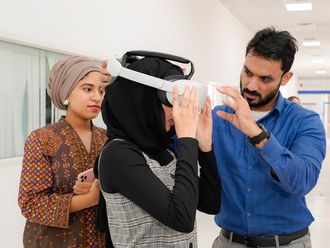What is Alzheimer’s disease?
It is the most common form of dementia or brain diseases that cause long-term loss of cognitive ability and reasoning and which are severe enough to affect daily functioning. The disease eventually leads to drastic changes in behaviour and personality, and erodes patients’ relationships. It is progressive, and there is still no cure. Available medications can only treat the symptoms of the disease to some extent.
What are the symptoms?
One of the earliest symptoms is memory loss, which shows up as difficulty in retaining recently learned facts and an inability to learn new information. Patients face impairments in cognition, and display signs of agitation and irritability. They slowly lose the ability to complete everyday tasks, and becoming increasingly reliant on caregivers. Language is also affected, along with significant behavioural and personality changes.
What are the risk factors?
Age: This is the biggest risk factor for Alzheimer’s. Ageing-related processes, such as atrophy and stress, cause damage to the brain, which eventually loses the ability to concentrate and undertake cognitive functions, said Dr Miia Kivipelto, professor of clinical geriatric epidemiology and senior geriatrician at Sweden-based medical university, Karolinska Institute.
“This is why nearly 40 per cent of people over the age of 85 have some form of dementia,” she added.
Genetic factors: These hereditary risks lead to early onset Alzheimer’s, which is seen in one per cent of all people diagnosed with the disease. A certain protein, apolipoprotein, is the best known risk gene for Alzheimer’s, Dr Kivipelto said.
“Most people will not know if they have the gene. But family history of Alzheimer’s and dementia could indicate a heightened risk,” the specialist said.
Vascular risk factors: These are the modifiable risk factors. Hypertension, high cholesterol, obesity and type 2 diabetes all increase the risk of developing Alzheimer’s in the future.
“While these vascular conditions are linked with the accumulation of proteins in the brain that are closely linked to Alzheimer’s, they also damage blood vessels and hinder blood flow to the brain, eventually causing the degeneration of neurons,” explained Dr Kivipelto.
But these risks are modifiable, and people can take hope from the fact that they can reduce their risk of Alzheimer’s by simply taking better care of their health, she added.
Other risk factors: People who smoke, suffer from depression, have had head traumas, have vitamin D deficiency, or are stressed. These people are more likely to develop Alzheimer’s.
How is it diagnosed?
When patients report memory loss and symptoms that mirror dementia, the first step is to conduct a clinical exam, with a focus on neurology. The physician needs to look for other diseases that are known to cause cognitive impairments unrelated to Alzheimer’s, including chronic kidney disease or respiratory disease.
Once the chance for other illnesses is ruled out, neuroimaging is undertaken via magnetic resonance imaging (MRI) and PET scans to determine the structural and functional capacities of the brain.
“A structural assessment of the brain, which is done through magnetic resonance imaging (MRI), could indicate brain shrinkage or atrophy, a common marker of dementia. The functional assessment with a PET brain scan, on the other hand, helps us find out the accumulation of proteins in the brain,” Dr Francesca Mangialasche, senior geriatrician and researcher at the Sweden-based Karolinska Insitute, told Gulf News.
While an extracellular accumulation of beta-amyloid proteins is common in patients suffering from Alzheimer’s, cells themselves contain another set of proteins known as tau proteins.
“We do not yet know what triggers these accumulations, but patients begin to lose neurones and synapses [gap between neurones through which information-carrying neurotransmitters pass]. The problems are first seen in the memory centres of the brain, and areas associated with learning, such as the hippocampus and the amygdala. Eventually, as the disease progresses, the accumulation spreads throughout,” the researcher explained.
How does it affect caregivers?
When a loved one is diagnosed with Alzheimer’s, it can trigger fear, anger, frustration and overwhelming sadness among caregivers, said Dr Hoda Smidi, clinical psychologist at HealthPlus Diabetes and Endocrinology Centre.
“The hardest part is dealing with behavioural changes and mood disorders in the patient, including depression, agitation, wandering and sleep disturbances. Family members may feel guilty and depressed themselves, or may be in denial that their loved one has a terminal illness,” Dr Smidi said.
She recommended psychological care for both the patient and other informal caregivers like family members, who are not only taking care of the patient but also often shouldering the financial burden of the care as well.












